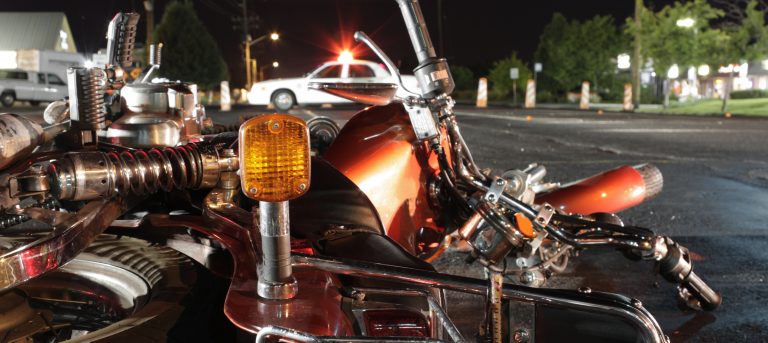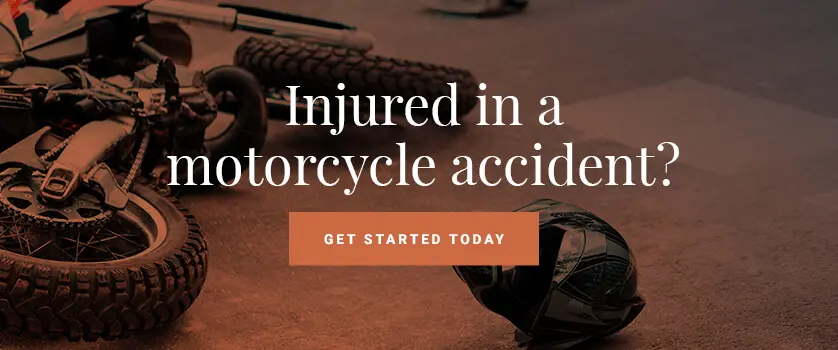What type of injury have you suffered?
Car Accident
- Car Accident
- Head Injury
- Premises Liability
- Products Liability
- Truck Accident
- Wrongful Death

Car Accident


Call 24/7
(877) 880-4090MENU



How you handle yourself after a motorcycle accident can make a world of difference in an insurance claim or personal injury lawsuit. When in doubt, call an motorcycle accident lawyer right away. The accident lawyers at Fielding Law are always available to offer free consultations in Taylorsville. We can walk you through the appropriate steps to take on the journey toward physical and financial recovery.
At Fielding Law, most of the clients we’ve represented had no clue what to do after a harmful motorcycle injury. The majority of drivers do not think about traffic accidents until they are in the midst of one. Don’t worry – our law firm is here to help you pick up the pieces and navigate your motorcycle accident claims, no matter what steps you took after your crash. Knowing what you should do, however, can help. Follow these 10 steps for maximum protection of your rights:

Utah is an excellent state for motorcycling, with spectacular drives. Motorcyclists hit the open road for views of creeks and canyons, and many navigate Utah’s cities for daily commutes. Every day, hundreds of motorcyclists in the state put themselves at risk just by operating their vehicles. Roads and highways can be dangerous for these road users, ending in deadly collisions. According to the Utah Highway Safety Report, there were nearly 13,000 motorcycle collisions and 10,436 injuries between 2006-2015.
[wpdatachart id=2]
Here are the latest statistics:
Utah isn’t the only state experiencing a high number of motorcycle accidents. There has been a recent rise in the number of motorcycle accidents around the country. In 2015, the number of national motorcycle accidents rose by 8.3% compared to the previous year (4,976 compared to 4,594 in 2014). In 2015, motorcyclists were about 29 times more likely to die in accidents than other types of motorists.
A accident can happen anywhere, but there are certain circumstances that result in higher numbers of these collisions than others. In Utah, most motorcycle accidents happen when motorcycles and other vehicles are traveling straight ahead (32.2% of all Utah motorcycle crashes in 2015). Vehicles making left-hand turns were the second-most common cause (28.7%), followed by other vehicles stopping in traffic lanes (13.2%). Parked motorcycles are at a relatively high risk of collisions, making up 14.1% of all motorcycle maneuvers prior to accidents in 2015.
To prevent collisions, motorcyclists should make themselves as visible as possible to other drivers. Smaller motorcycles are more difficult to see. Wearing brightly colored clothing and keeping daytime running lights on at all times can help prevent visibility-related accidents. Motorcyclists should also obey roadway rules to make their actions predictable. Obeying the speed limit, yielding the right of way, keeping a safe distance, and staying within the lane (instead of lane splitting) can help motorcycles avoid accidents.
Motorcycle accidents happen for the same reasons as other types of motor vehicle accidents: speeding, alcohol/drug intoxication, distracted driving , and broken roadway rules. Motorcycles are involved in more single-vehicle accidents than cars, due to speeding and inexperienced motorcyclists. Operating under the influence is illegal in Utah, where the maximum blood alcohol concentration (BAC) level is 0.08% (which may change to 0.05% in the near future). In 2015, the most common causes of motorcycle crashes in the U.S. were as follows:
Statistics show that “super sport motorcycles” have the highest number of losses compared to other classes of motorcycles. These models show higher insurance claim frequencies, likely due to the ability to reach much higher speeds than typical motorcycles. Super sport models deliver more horsepower per pounds and can reach speeds of up to 190 miles per hour. They are primarily for racing platforms, not for highways. If operating this type of motorcycle, do so with care and according to posted speed limits.
Utah only has a partial law when it comes to motorcycle helmet use. Motorcycle drivers and passengers under the age of 18 must wear helmets that abide by federal safety standards. For those 18 and older, helmet use is optional. Helmet use will not affect an adult motorcyclist’s liability for injuries or compensation award since the law does not mandate use. If the driver is under the age of 18 and not wearing a helmet, the fact that he or she broke the law may affect the personal injury claim.
Overall, helmet usage is significantly lower in fatal motorcycle crashes than in total crashes.
Over the last ten years, 56.9 percent of riders and passengers wore helmets in all crashes, while just 44.8 percent wore them in fatal crashes.
Motorcyclists must have other pieces of equipment to legally ride in Utah. Utah Administrative Code, Rule R714-161, states that all motorcycles must have proper registration, tires/wheels, steering capabilities, brakes, lighting, electrical systems, suspension, exhaust, fuel systems, windshields, frames, and bodies. There are hundreds of specifications a motorcycle must meet to be roadway-worthy. Motorcyclists need Class M licenses to operate these vehicles in Utah, as well as a motorcycle endorsement.
Keep our number, (801) 666-2912, in your phone. We’re happy to answer any questions you may have about your crash. We’ll meet for a free case evaluation, whenever is the most convenient for you. Get in touch with our Personal Injury attorneys or online to schedule your free consultation today with a motorcycle accident attorney. We are available to take your call 24/7
Past Client Review:
“The man will go the extra mile and then some.” -Peter Pfeifer